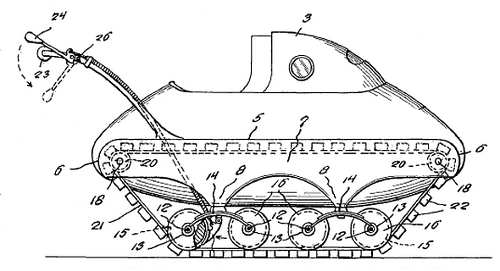
This one’s pretty straightforward. David Leslie’s “wearable device for feeding and observing birds,” patented in 1999, is essentially a helmet mounted with three poles, each bearing a bird feeder. “When flying animals feed from the feeders, a person wearing the hat may observe them from a short distance.”
The helmet can also be fitted with magnifying glasses and videocameras. One wonders what the birds think of this.








